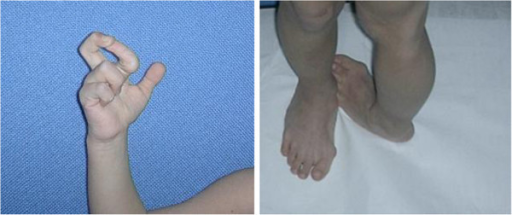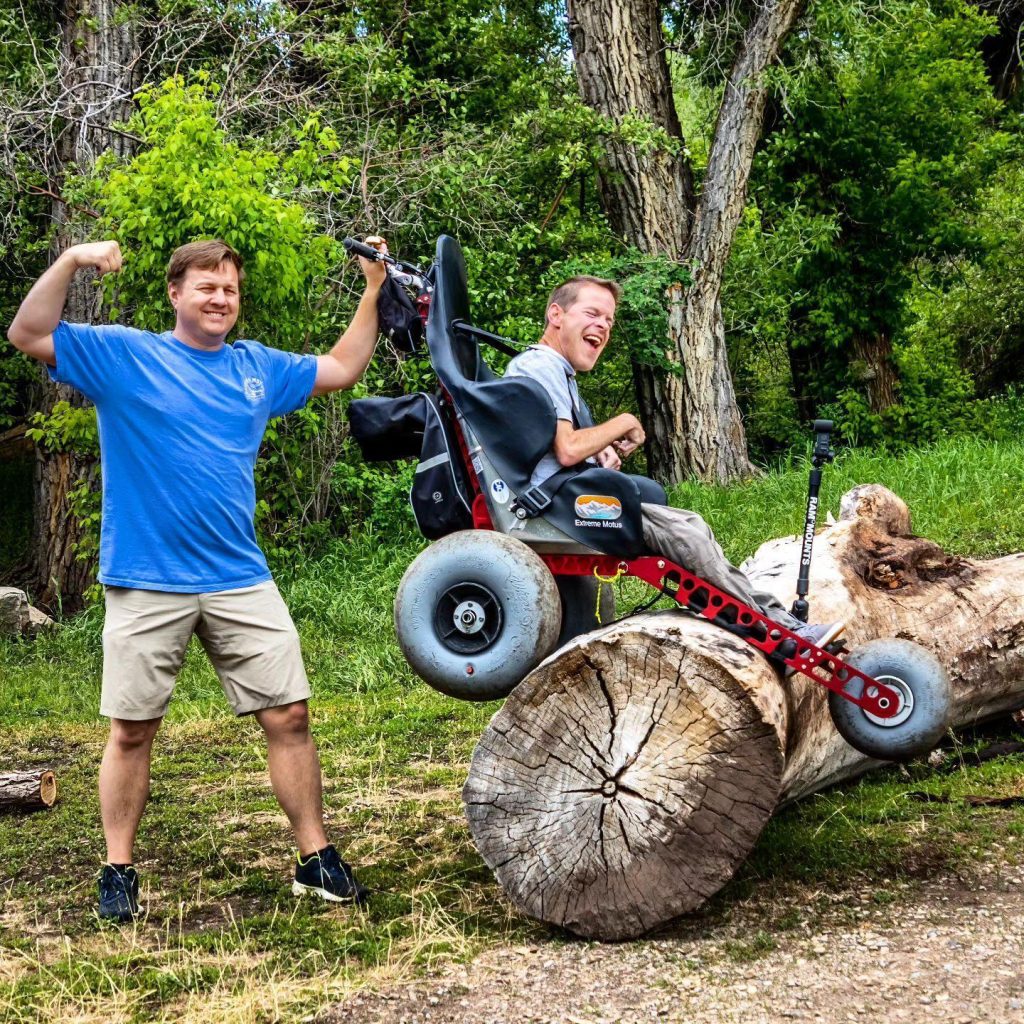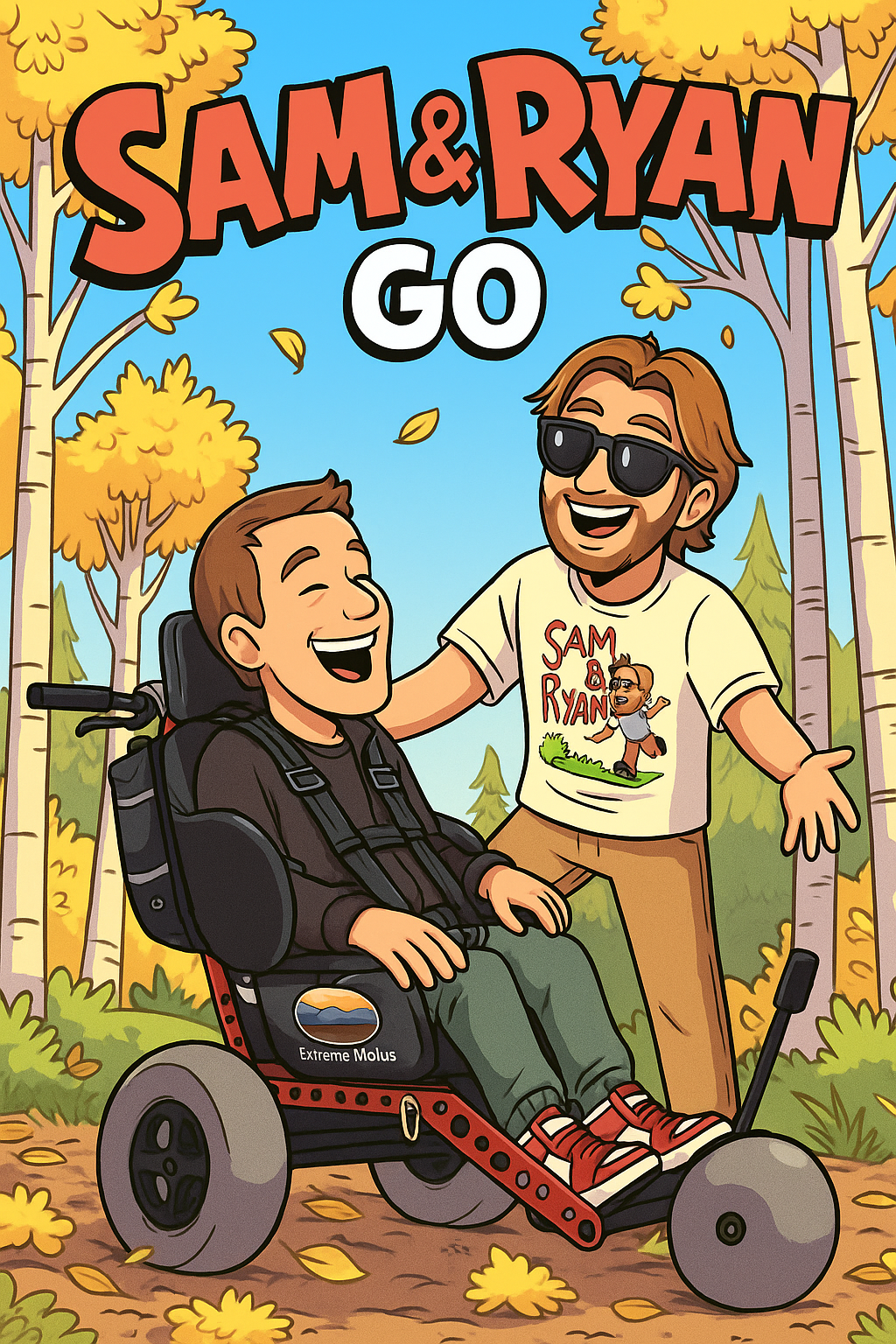8 Things to Know About Ehlers-Danlos Syndrome (Severe Cases) and the Benefits of Outdoor Activities
Ehlers-Danlos Syndrome (EDS) is a group of connective tissue disorders that can lead to severe mobility challenges, chronic pain, and other complications. For those with severe cases, spending time outdoors and using tools like an all-terrain wheelchair can significantly enhance physical and mental well-being. Here’s what you need to know about EDS and the transformative benefits of outdoor activities.
1. What Causes Ehlers-Danlos Syndrome?
EDS is caused by genetic mutations that affect the structure and production of collagen, a key protein in connective tissues. This leads to symptoms such as joint hypermobility, fragile skin, and weakened blood vessels.
Key Causes:
- Genetic Mutations: Most forms of EDS are inherited, though some cases occur due to spontaneous mutations.
- Collagen Deficiency: The defective collagen weakens connective tissues throughout the body.
2. How Many People Are Affected by Ehlers-Danlos Syndrome?
EDS is considered a rare condition, with estimates suggesting it affects about 1 in 5,000 people worldwide. However, milder forms may be underdiagnosed, making the actual prevalence difficult to determine. Severe cases, such as vascular EDS, are rarer and require specialized care.

3. What Are the Treatments for EDS?
While there is no cure for EDS, treatments focus on managing symptoms and preventing complications:
- Physical Therapy: Improves muscle strength and joint stability while reducing the risk of dislocations.
- Pain Management: Medications or non-invasive therapies to alleviate chronic pain.
- Braces and Supports: Provide stability for hypermobile joints and prevent injuries.
- Surgical Intervention: Rarely performed due to the fragility of connective tissues but may be necessary for life-threatening complications.
- Lifestyle Modifications: Low-impact exercises and avoiding activities that strain joints.
4. Is There a Cure for Ehlers-Danlos Syndrome?
Currently, there is no cure for EDS. Ongoing research focuses on understanding the genetic causes and developing treatments to strengthen connective tissues and manage complications.
5. Why Is Spending Time Outdoors Important for People with EDS?
Connecting with nature can provide numerous physical and emotional benefits for individuals with Ehlers-Danlos Syndrome:
- Low-Impact Physical Activity: Gentle outdoor exercises, such as walking or stretching, improve circulation and muscle tone without overstraining joints.
- Mental Health Benefits: Being outdoors reduces stress, anxiety, and depression, which are common among individuals managing chronic pain.
- Boosts Vitamin D Levels: Sunlight strengthens bones and supports immune health.
- Encourages Social Interaction: Parks and other outdoor spaces create opportunities to connect with friends and family.
- Fosters a Sense of Normalcy: Spending time outdoors provides a welcome break from medical appointments and daily challenges.
6. How Does Spending Time Outdoors Affect Mental and Physical Health?
Outdoor activities are essential for individuals with EDS, offering benefits such as:
- Improved Mood: Exposure to natural surroundings promotes relaxation and reduces feelings of isolation.
- Enhanced Physical Function: Even light activity in a natural setting helps maintain joint flexibility and muscle strength.
- Cognitive Benefits: Nature improves focus and reduces mental fatigue, often associated with chronic illness.
7. How Does Ehlers-Danlos Syndrome Affect Family Members?
Living with EDS impacts the entire family:
- Emotional Strain: Families may feel overwhelmed by the physical and emotional challenges their loved one faces.
- Caregiving Responsibilities: Severe cases often require significant caregiving support, leading to caregiver fatigue.
- Financial Challenges: The cost of treatments, mobility aids, and potential surgeries can strain household finances.
- Social Adjustments: Families may need to adapt outings and activities to ensure accessibility and comfort.
Spending time outdoors together can strengthen family bonds, providing moments of joy and connection.
8. How Can an All-Terrain Wheelchair Help People with Ehlers-Danlos Syndrome Enjoy the Outdoors?
For individuals with severe EDS, mobility challenges and joint instability often make outdoor activities difficult. An all-terrain wheelchair can help:
- Navigates Uneven Terrain: Designed to handle gravel, sand, dirt paths, and grassy areas, making nature more accessible.
- Provides Stability and Comfort: Shock absorbers and ergonomic seating ensure a safe and smooth experience, even on rough trails.
- Encourages Independence: Allows users to explore outdoor spaces without relying heavily on caregivers.
- Supports Social Engagement: Facilitates participation in family outings, hikes, or group events.
- Reduces Pain and Fatigue: Helps conserve energy, enabling individuals to enjoy longer outings without strain.
What is the Extreme Motus All-Terrain Wheelchair?
The Extreme Motus All-Terrain Wheelchair is an innovative mobility aid that offers unparalleled support, comfort, and freedom for individuals with Ehlers-Danlos Syndrome (EDS), a connective tissue disorder that often leads to joint instability, chronic pain, and fatigue. By enabling access to outdoor spaces and reducing physical strain, this wheelchair can significantly enhance the quality of life for those with EDS.
How the Extreme Motus Wheelchair Benefits People with Ehlers-Danlos Syndrome
1. Reduces Joint Strain and Pain
- Shock-Absorbing Suspension: Minimizes vibrations and jolts on uneven terrain, reducing strain on hypermobile or fragile joints.
- Ergonomic Design: Supports proper posture and distributes pressure evenly, alleviating pain caused by joint instability and muscle fatigue.
2. Provides Safe and Stable Mobility
- Secure Frame: Ensures a steady ride, even on challenging terrain, reducing the risk of dislocations or injuries often associated with EDS.
- Confidence Booster: Allows individuals to move freely and safely, empowering them to explore outdoor spaces without fear of exacerbating symptoms.
3. Expands Outdoor Accessibility
- All-Terrain Capability: Navigates gravel, sand, dirt trails, and grassy fields with ease, enabling users to access parks, beaches, and hiking paths.
- Durable and Lightweight Construction: Designed to handle rugged environments while being easy to maneuver and transport.
4. Supports Physical and Mental Well-Being
- Encourages Outdoor Activities: Spending time in nature can reduce stress, anxiety, and depression, fostering emotional resilience and overall well-being.
- Boosts Vitamin D Levels: Sunlight exposure strengthens bones and supports immune function, particularly beneficial for individuals with EDS who may have related bone or immune health issues.
- Promotes Gentle Activity: Access to outdoor spaces supports light movement, which can improve circulation and prevent stiffness without overexertion.
5. Fosters Social Inclusion
- Facilitates Group Participation: The wheelchair makes family outings, community events, and social activities more accessible, reducing feelings of isolation.
- Strengthens Relationships: Shared outdoor experiences create meaningful connections with loved ones and foster a sense of belonging.
6. Promotes Independence
- User-Friendly Operation: Easy-to-navigate controls and design empower individuals to explore independently or with minimal assistance.
- Enhances Freedom: Overcomes mobility barriers, allowing users to embrace new environments and activities confidently.
Why the Extreme Motus Wheelchair Is Ideal for Ehlers-Danlos Syndrome
The Extreme Motus wheelchair is tailored to meet the unique needs of individuals with EDS. Its combination of stability, comfort, and adaptability provides a reliable and empowering solution for navigating the outdoors while minimizing joint stress and discomfort.
Rediscover the Outdoors with Extreme Motus
Living with Ehlers-Danlos Syndrome doesn’t have to limit your experiences. The Extreme Motus all-terrain wheelchair offers a safe, comfortable, and effective way to explore nature, connect with loved ones, and enjoy life to the fullest.
Ready to reclaim your freedom? Discover how the Extreme Motus wheelchair can help you or a loved one experience the outdoors without limitations.
Conclusion: Embrace the Outdoors and Overcome Barriers
While living with Ehlers-Danlos Syndrome presents unique challenges, the therapeutic benefits of nature can play a significant role in improving quality of life. Spending time outdoors fosters mental and physical health for individuals and their families. With the support of an all-terrain wheelchair, navigating nature becomes safe, accessible, and empowering.
Ready to rediscover the outdoors? Explore our range of all-terrain wheelchairs designed to empower individuals with EDS and other mobility challenges today!
Every year, more families discover the freedom these chairs create—this Black Friday, demand is already building fast. By joining the early-access list, you secure your chance to order before the sale goes public on November 28, 2025.
Since 2019, Sam and Ryan have been demonstrating that nature is wheelchair accessible with the Extreme Motus All Terrain Wheelchair. From National Parks to Skateparks, their adventures prove that a manual off-road wheelchair can offer laughter and joy while navigating diverse terrains.
Join us as we continue to share these inspiring journeys.

Light, comfortable, and compact, the Extreme Motus glides over sand, rocks, grass, gravel, and even floats in water.
It’s more than a outdoor wheelchair; it’s your ticket to freedom. Embrace the outdoors with confidence, knowing our off-road wheelchair is engineered for durability and ease of use.
Be the first to hear about new gear, upcoming adventures, and exclusive offers. As a welcome gift, enjoy $10 off your first Motus T-Shirt when you subscribe.
By subscribing you agree to receive marketing communications from Extreme Motus, including product updates, promotions, and special offers. I understand I can unsubscribe at any time.



